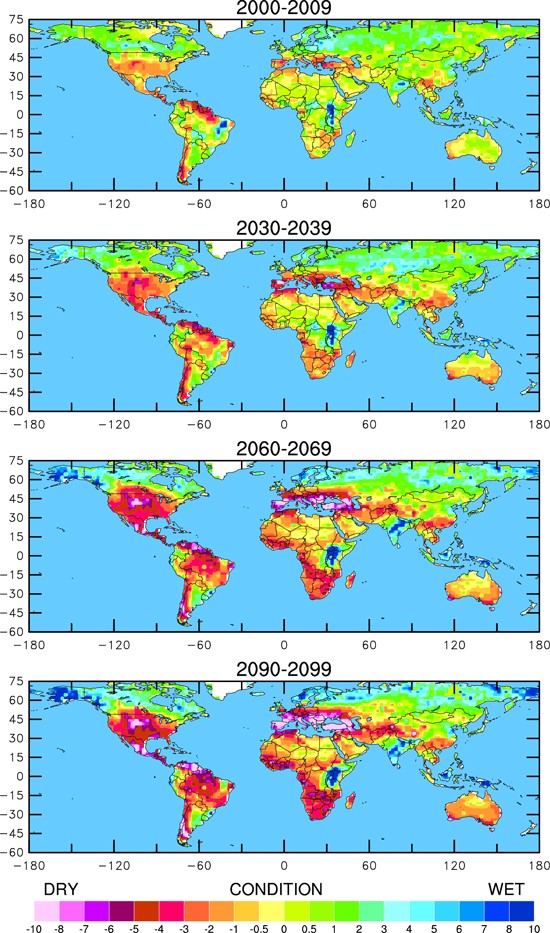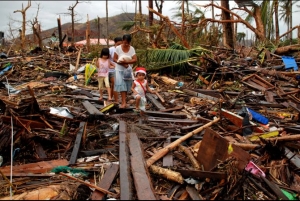“There is a relationship between carbon emissions and our national security.” General Gordon R. Sullivan (ret,) chairman of the Military Advisory Board and former Army Chief of Staff
RAdm Len Hering Speaks in Coronado about the Effect of Climate Change on National Security
Human-induced climate change: Is it acknowledged in places that count? There must be institutions in the United States that have to deal with the very real consequences of climate change, and the military is one of them.
Why the military must concern itself with climate change was the topic of retired Rear Admiral Len Hering’s lecture on Wednesday evening, November 12, at the Coronado Community Center. Entitled National Security and Climate Change, the lecture was sponsored by Citizens Climate Lobby, and Rear Admiral Hering was introduced by Coronado Mayor Casey Tanaka (who, incidentally, rode his bike to the event.) Hering addressed the problem of a growing human population and the many industrial-age human activities that are degrading the planet, causing climate change and its consequences. What in particular concerns the military is the increase of national security risks around the globe.
Rear Admiral Hering’s background includes a degree in marine biology and experience dealing with problems related to issues of planet health encountered during his years as a captain in the US Navy, stationed here in San Diego. Following retirement from the Navy, Hering demonstrated leadership with the promotion and installation of sustainable technologies, most notably during his years at the University of San Diego. He is the current Executive Director of the California Center for Sustainable Energy.
Using the following series of maps, Hering made the point that the regions of the earth that will be most affected by extremes of precipitation are the world’s breadbaskets. One salient example he gave was the conflict in Syria, a country now in its 15th year of drought. Because its agricultural output has been seriously degraded by years of drought, Syria is a nation easily destabilized, which is exactly what events in the news tell us has been happening. The crowded Middle East, with dwindling resources to feed an increasing number of inhabitants is the current global poster child for the conflicts that will arise, as people identify with their own ethnic, national or religious group against others in the fight for the most basic of resources, water. In this way, issues of a political and religious nature camouflage the true one: survival of one’s own.

(Courtesy Wiley Interdisciplinary Review)
Another kind of human suffering described by Hering is the displacement of entire communities due to flooding and sea-level rise. The example he gave was the loss of small farms in coastal Bangladesh to sea-level rise and flooding from storm surges that render the soil too salty for farming. Climate-change refugees have spilled over into northeastern India especially. The obvious result has been deadly conflict between the refugees and the long-time inhabitants of the region where the refugees have been resettling.
Hering’s talk juxtaposed such examples of human dislocation with the wastefulness of human activity in more prosperous industrialized nations. The clear picture is that the poor will suffer the most, and long before we in the U.S. will feel the most devastating effects of climate change.
The loss of coastal lands will affect many in varying degrees worldwide. Miami and Coronado will see the loss of valuable property, including a prominent military base. The Philippines, with an average altitude of only eight feet faces enormous human losses, not just to sea-level rise but also to intense storms due to its location along the Western Pacific’s Typhoon Alley. As many as 12 million climate-change refugees will likely be created. Other, smaller Pacific Island nations, balmy paradises like Kiribati, will cease to exist, their inhabitants all becoming refugees.

Bringing the consequences closer to our own shores, Hering quoted Admiral Sam Locklear, Commander of the U.S. Pacific Command, as warning that climate change is the greatest long-term security threat in the Pacific region.
RAdm. Hering explained other climate-change-induced security threats: the opening up of Arctic waters, which will give hostile nations greater freedom of movement; ocean warming and the disruption of air and water currents, causing extreme weather events that result in loss of lives, livelihoods and property; the degraded health of the oceans affecting the food chain and ultimately the main source of protein for 70% of the world’s human population; diminished world water supplies causing the devastation of farms and farm-animal husbandry, leading to terrible food insecurities; the thawing of the permafrost which will accelerate the release of methane into the atmosphere and, in turn, further accelerate atmospheric warming. Some of these are political threats, but others are existential, promoting fear, turmoil, irrational political movements and violence, all serious threats to peace and stability — and, in this globally-connected world, to our own security.
Throughout his lecture, Hering’s passion for confronting climate change and promoting sustainability was dramatized by the tone of his voice and the energy in his gestures. His strong belief in the responsibility of the U.S. and other prosperous and privileged nations came through in every aspect of his talk, which included food waste, general pollution, and industrial degradation as well as climate change. A photograph of his grandchildren personalized a theme he returned to time and again: This is not about us; it’s about our children and grandchildren, the future of humanity.

One Response
Bonnie, as far as it goes this blog is a fine presentation of Hering’s talk, especially with the maps, but it leaves out everything he had to say about solutions and even more importantly about encouraging us to get up and do not only what /needs/ to be done, as Garrison Keiller puts it, but what /can/ be done, as he, can-do military commander Hering put it.